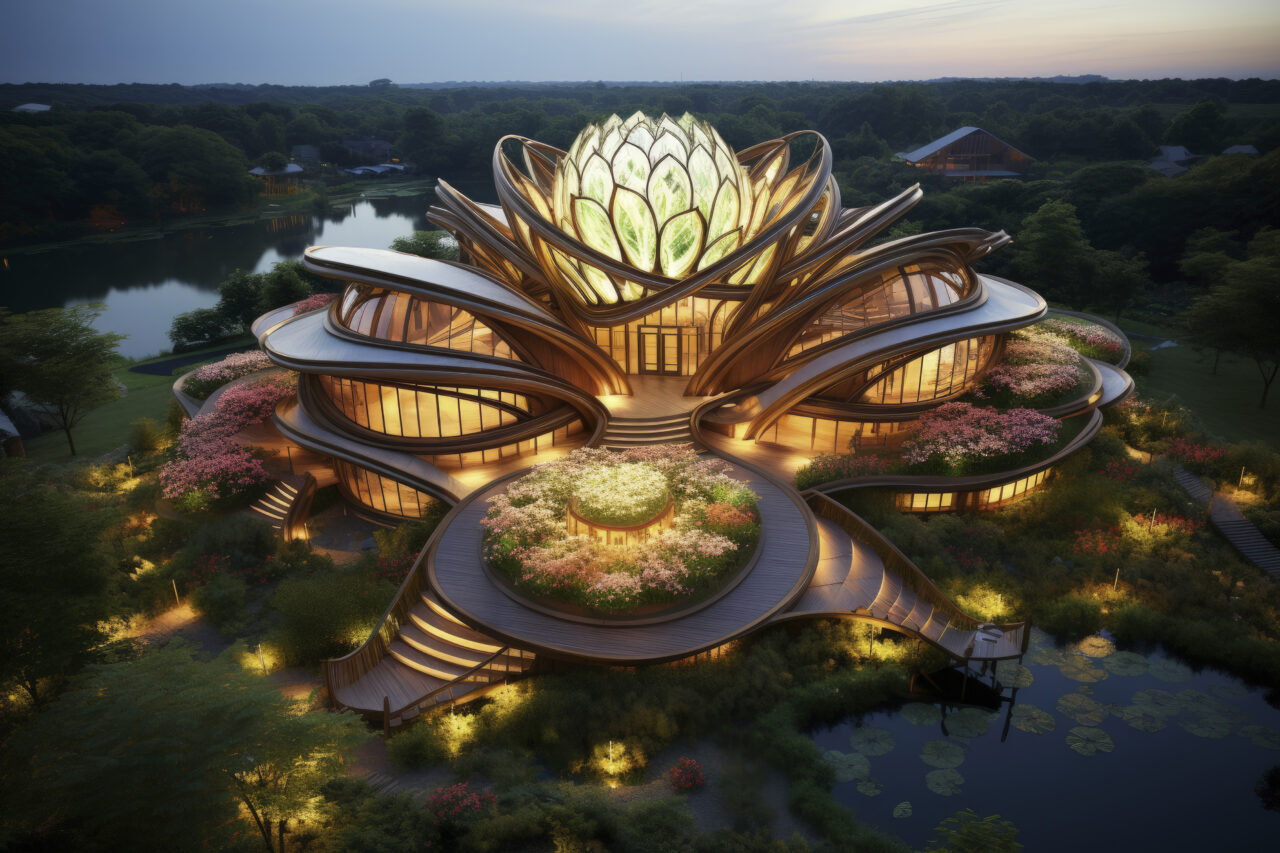Introduction
In the evolving landscape of urban intelligence, smart buildings are no longer passive shells of glass and steel they are becoming Cognitive Cathedrals, living systems that think, adapt, and interact. By embedding AI-driven neural networks within the very fabric of architecture, buildings are starting to resemble living neural structures, capable of learning from human behaviour, environmental signals, and operational data.
This transformation is redefining how we design, inhabit, and sustain our built environments.
From Smart Buildings to Cognitive Cathedrals
Traditional smart buildings rely on sensors and automation to optimise energy usage, security, and comfort. Cognitive Cathedrals take this concept further. They integrate AI, IoT, digital twins, and neural-inspired algorithms to create adaptive ecosystems that function much like a brain receiving signals, processing data, and adjusting responses in real time.
These structures evolve continuously, shifting from being responsive to becoming predictive and self-optimising.
The Evolution of Intelligent Architecture
The journey toward Cognitive Cathedrals didn’t happen overnight. Early smart buildings in the 1990s focused mainly on automation lighting systems, HVAC control, and energy monitoring. The next wave introduced IoT devices that allowed greater connectivity but still relied on predefined rules.
Today’s cognitive structures move beyond automation into the realm of machine learning and adaptive intelligence. Instead of being programmed to follow rules, they develop situational awareness, adapting dynamically as conditions change. This progression marks the shift from “smart” to truly cognitive architecture.
Neural Structures in Architecture
Think of every sensor, device, and digital twin inside a building as a neuron in a vast network. Just as neurons communicate through synapses, these digital touch points share insights across HVAC systems, lighting grids, security nodes, and occupant interfaces.
- Data as Synapses: Every interaction from a person adjusting room temperature to external weather changes feeds into the building’s intelligence loop.
- Learning Over Time: Machine learning models allow buildings to adapt to recurring patterns, optimizing operations for both sustainability and human comfort.
- Collective Intelligence: When buildings are interconnected across campuses or cities, they function as a neural network of ecosystems, amplifying efficiency and resilience.
Human-Centric Benefits
Cognitive Cathedrals prioritise well-being, efficiency, and sustainability:
- Personalised comfort through adaptive lighting, air quality, and space usage.
- Predictive maintenance that prevents breakdowns and reduces operational costs.
- Reduced carbon footprint via AI-optimised energy management.
- Seamless human-building interaction, where environments anticipate needs rather than react.
Beyond convenience, this shift is deeply human-centric. Studies show that workplaces with adaptive environments improve employee productivity and satisfaction, while residential spaces that intelligently regulate temperature and lighting can promote better sleep and health outcomes.
Real-World Applications Emerging Today
Some leading technology campuses and hospitals are already experimenting with cognitive design principles. For example:
- Hospitals use AI-driven ventilation and predictive maintenance to ensure sterile, energy-efficient environments.
- Corporate campuses deploy digital twins to optimize employee movement, reducing energy waste while improving comfort.
- Residential towers integrate renewable energy with AI-driven storage, creating near self-sufficient energy ecosystems.
These are early glimpses into how Cognitive Cathedrals will scale into mainstream adoption in the coming decade.
Technologies Making It Possible
- IoT Mesh Networks – Acting as sensory inputs for real-time awareness.
- AI Neural Engines – Processing multi-dimensional data streams for decision-making.
- Digital Twins – Creating virtual replicas that simulate scenarios before implementation.
- Blockchain & Security Layers – Ensuring transparent, secure, and resilient operations.
The Question of Ethics and Trust
With intelligence comes responsibility. If buildings begin to “think,” who owns the data they generate? How do we ensure that privacy, inclusivity, and security remain central to architectural intelligence? These questions are crucial because the future of Cognitive Cathedrals is not just about technology it’s about trust between humans and their built environments.
Forward-looking companies are embedding AI ethics frameworks into architectural intelligence, ensuring that innovation does not compromise human dignity or environmental responsibility.
Future Outlook: The Conscious City
As Cognitive Cathedrals multiply, they will become nodes of intelligence in larger urban networks. Eventually, entire cities may function like distributed brains, where every building contributes to collective learning and resilience.
This vision transforms cities into living neural ecosystems, where architecture is not just designed for humans it evolves with them.
Conclusion
Cognitive Cathedrals represent a new paradigm: buildings as living neural structures. They embody the synergy of AI, architecture, and human life, reshaping cities into spaces that are adaptive, sustainable, and intelligent.
At Astrikos.ai, we believe that this convergence of AI-powered architecture and human-centered design will shape the future of truly intelligent cities.

